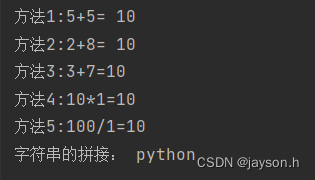函数和文件
回忆一下函数的要点,然后一边做这节练习,一边注意一下函数和文件是如何在一起协作发挥作用的。
新建一个ex.txt文本文档
To all the people out there.
I say I don't like my hair.
I need to shave it off.
from sys import argv #从sys里调用argv
script,input_file = argv #解包参数
def print_all(f):#定义print_all函数,f为函数的参数-文件名
print(f.read()) #函数内容为读取
def rewind(f):
f.seek(0)# 使用seek(),默认一开始在开头,移动0个位置
def print_a_line(line_count,f):
print(line_count,f.readline())#readline()读取整行
current_file = open(input_file)#打开文件
print("First let's print the whole file:\n")
print_all(current_file)#使用print_all函数
print("Now let's rewind,kind of like a tepe.")
rewind(current_file)#使用rewind函数
print("Let's print three lines:")
current_line = 1
print_a_line(current_line,current_file)
current_line = current_line + 1 #current_line += 1(增量幅值)
print_a_line(current_line,current_file)
current_line = current_line + 1 #current_line += 1(增量幅值)
print_a_line(current_line,current_file)使用cmd执行命令
文件地址:
"D:\Python Project\practice\ex13.py" "D:\Python Project\practice\ex.txt"
cmd运行结果
First let's print the whole file:
To all the people out there.
I say I don't like my hair.
I need to shave it off.
Now let's rewind,kind of like a tepe.
Let's print three lines:
1 To all the people out there.
2 I say I don't like my hair.
3 I need to shave it off.
Python-seek()函数:移动光标或指针
seek函数能够帮助我们File Handle,即文件处理
在Python中,我们可以将seek()最简单理解为:移动光标或指针
由于不能用鼠标移动光标,我们可以用seek()将光标移动到我们想要的位置,然后对文件进行写入等操作
参数
Syntax: f.seek(offset, whence),f指的是file(或$你的文件名)
Parameters:
offset: 将光标向前移动n个位置
whence: 参考位置,一般参数为0,1,2
0 :将开头作为参考位置
1 :将当前作为参考位置
2 :将末尾作为参考位置
(所谓参考位置(reference point)一开始你想在哪)
————————————————
版权声明:本文为博主原创文章,遵循 CC 4.0 BY-SA 版权协议,转载请附上原文出处链接和本声明。
原文链接:https://blog.csdn.net/ONEmoreOrange/article/details/118252278
Python-readline()函数-读取整行
概述
readline() 方法用于从文件读取整行,包括 "\n" 字符。如果指定了一个非负数的参数,则返回指定大小的字节数,包括 "\n" 字符。
语法
readline() 方法语法如下:
fileObject.readline(size)
参数
size -- 从文件中读取的字节数。
返回值
返回从字符串中读取的字节。
python赋值语句----增量赋值(augmented assinment)
增量赋值包含一个二元表达式和一个赋值表达式。如下:
a += b
a = a + b
以上两种格式效果等同。
若被赋值的对象为列表(可变对象)时,两种形式的赋值略有区别:
“+=”会在原有位置修改对象,而“+”会创建一个新的对象:
其中 +、-、*、/、%都可以实现这种操作
增量赋值示例
def fu_zhi_zeng_liang(number):
a = number
a += number
print("方法1:5+5=",a)
fu_zhi_zeng_liang(5)
def fu_zhi_zeng_liang2(number):
a = 2
a += number
print("方法2:2+8=", a)
fu_zhi_zeng_liang2(8)
def fu_zhi_zeng_liang3(number):
a = 3
a += number
print("方法3:3+7=%d" % int(a))
fu_zhi_zeng_liang3(7)
def fu_zhi_zeng_liang4(number):
a = 10
a *= number
print("方法4:10*1=%d" % int(a))
fu_zhi_zeng_liang4(1)
def fu_zhi_zeng_liang5(number):
a = 100
a /= number
print("方法5:100/1=%d" % int(a))
fu_zhi_zeng_liang5(10)
#字符串的拼接
b ="py"
b +="th"
b +="on"
print("字符串的拼接:",b)
#两种赋值方法对比
c = [11,22,33]
d = [1,2,3]
d += c
e = d + c
print("d+=c:",d)
print("e=d+c:",e)






















 305
305











 被折叠的 条评论
为什么被折叠?
被折叠的 条评论
为什么被折叠?








